Navy Kludges Networks: $1M Per Carrier Strike Group, Per Deployment
Posted on
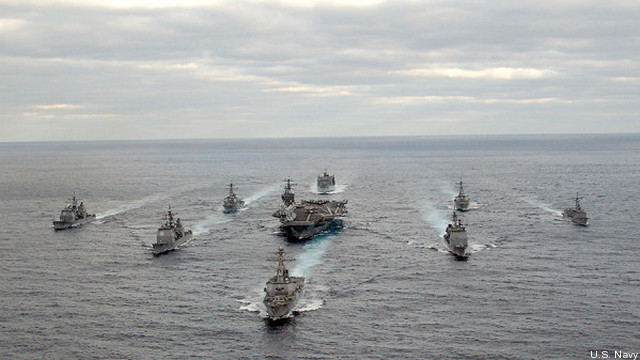
The USS George Washington carrier strike group
SAN DIEGO: It takes a million dollars and at least 50 technical experts just to get a carrier strike group’s networks working right before a deployment, Navy officials said at the AFCEA-USNI WEST conference here last week.
The Navy’s vision of future war against a major power — China or Russia — relies on secure, reliable, long-range networks to share threat warnings and targeting data among widely scattered ships. (The concept’s called Distributed Operations or Distributed Lethality). For the Navy’s networks today, however, the reality is less William Gibson and more Rube Goldberg.
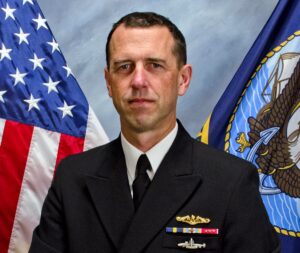
Adm. John Richardson
“It would be terrific if we could just take a time-out in the world and stop and get everybody onto the same level of technology,” the Chief of Naval Operations, Adm. John Richardson, told reporters at the conference, “but the truth of the matter is, in this and every other system that goes across a large fleet, is that you’re renewing it in stride.”
Specifically, ships undergo overhauls as deployment schedules and shipyard workloads allow, and they get whatever the latest available technology is at the time they come in. That maintenance and upgrade process is already complex and gets outright fraught when Congress fails to pass proper spending bills on time, as it has for the last nine fiscal years.
Stable and predictable funding will help you do that,” Richardson said. “We’ll continue working with our partners in Congress.”
New ships, of course, “are being built to newer standards,” Richardson said, “and then you’ve got a tremendous amount of legacy force that you’ve got to come up with some kind of interface (for) so they can also participate in this networked force.”
Figuring out that interface is a huge job.
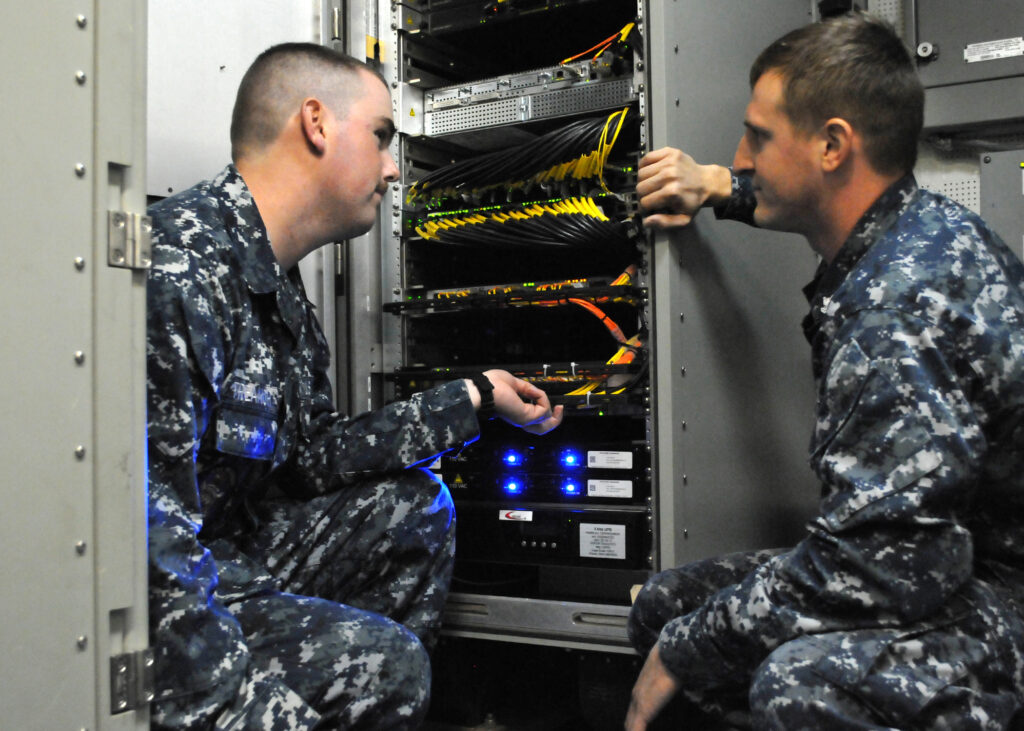
Navy technicians work on the CANES network aboard the destroyer USS Milius
What It Takes
When people talk about “networks,” they usually think of Internet Protocol (IP) networks running over landlines and short-range wireless (i.e. radio) connections. But tactical networks need to work on the move, without an infrastructure of cell towers and wi-fi routers, so they rely on long-range radio connections, often relayed via satellites. The transmissions have to be powerful enough to get through despite distance, atmospheric conditions, and enemy jamming, while subtle enough they don’t pinpoint their transmitter as a target. The network has to be secure enough to keep out highly skilled nation-state hackers. And, for the Navy, all of this has to work on ships at sea.
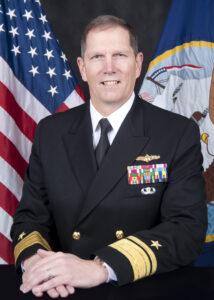
Vice Adm. Matthew Kohler
When you think about the problem that way, $1 million is a pretty good price to connect a Carrier Strike Group consisting of a 1,000-foot-long nuclear-powered supercarrier, an air defense cruiser, two destroyers, an attack submarine, and a supply ship. But Vice Adm. Matthew Kohler, head of NAVIFOR, clearly wants to simplify the process.
Currently, when a strike group is getting ready to deploy, NAVIFOR sends it a Deploying Group System Integration Testing (DGSIT) team, Kohler told the conference. That’s “a million dollars per strike group, a 50-to-60 man team….just to get the systems to work together the way they’re supposed to,” he said.
Note the plural: systems. A fundamental problem is that there is no one “network.” They Navy ties together multiple different networks, communications systems, and computing environments, all created by different parts of the Navy and Marine Corps at different times for different purposes. (Let’s not even get started on connecting to the Army or the Air Force).
“We’re seeing some of that friction come from the fact that these systems were designed around given functional communities’ requirements,” said Kenneth Bible, the Marine’s deputy Chief Information Officer. “So they weren’t necessarily designed to run on a common infrastructure, so getting things to run on CANES is a lot of work.” CANES — Consolidated Afloat Network and Enterprise Services — is the Navy’s standard shipboard network. But different ships have different versions, depending on when it was installed; some ships don’t have CANES at all. The more different systems the different ships of a strike group have, the more specialists the DGSIT has to bring: The team is tailored to the specific strike group’s needs, one of Kohler’s staff told reporters, and while 60 to 80 members is typical, “it can go up to a hundred.”
The situation’s so complex that it’s been a struggle just getting different branches of the military to upgrade their off-the-shelf software to Windows 10. In one case where the Marines brought their equipment, which had Windows 10, onto a Navy vessel, which didn’t, Bible said, “some things stopped working.”
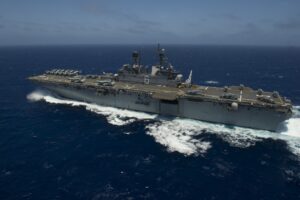
The “big-deck” amphibious assault ship USS America (LHA-6)
“How dare you bring Windows 10 aboard a Navy ship,” Kohler chided jokingly, to general laughter. That kind of glitch, he added more seriously, is why he also sends a DGSIT team out to Marine Expeditionary Units before they deploy about a Navy Expeditionary Strike Group.
It’s worth noting the DGSIT is just one phase in the laborious process of getting ready to deploy. It’s preceded by various training and testing events for each individual ship. Then the DGSIT gets the different ships connected to each other, allowing them to train together as a fighting unit in simulated high-intensity warfare (called a Composite Training Unit Exercise or COMPTUEX). Finally, expert coders actually sail with the strike group for the entire deployment to fix anything that goes wrong at sea. (These Fleet Systems Engineering Teams, FSETs, come from Space & Warfare Systems Command, SPAWAR).
Is there an end in sight to all this effort? Will there ever be a day when the whole Navy is upgraded to the same hardware and software and everything’s just done? “You keep working on it,” said CNO Richardson. “It’s like painting the Golden Gate bridge. As soon as you get to one end, it’s time to start the beginning again.”
Subscribe to our newsletter
Promotions, new products and sales. Directly to your inbox.
